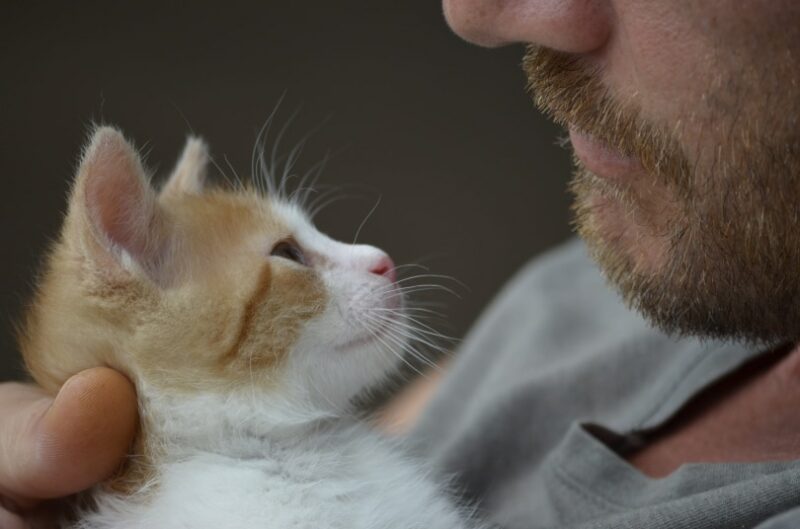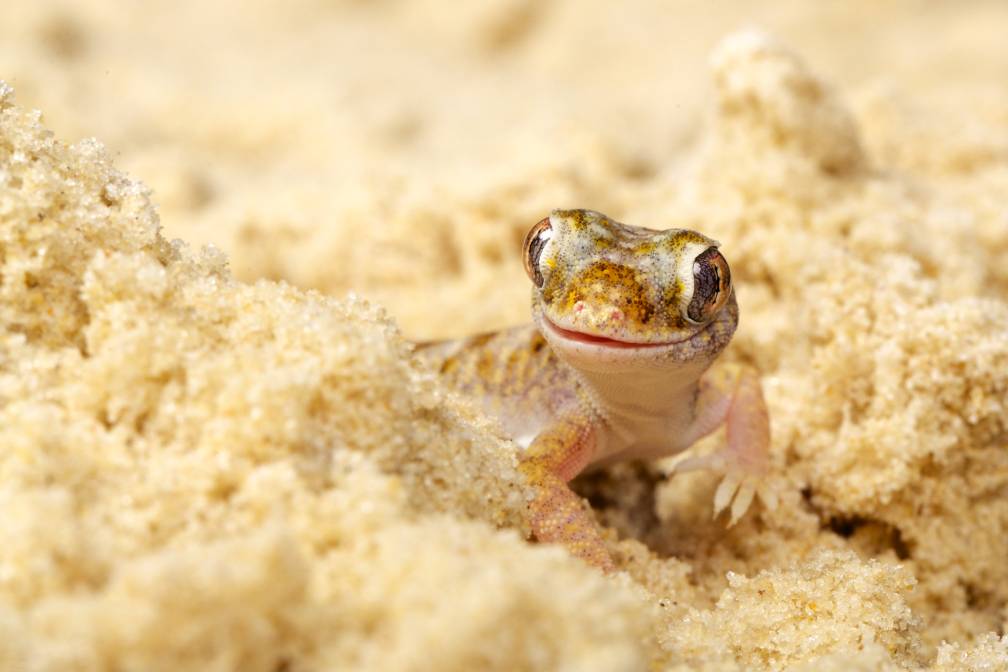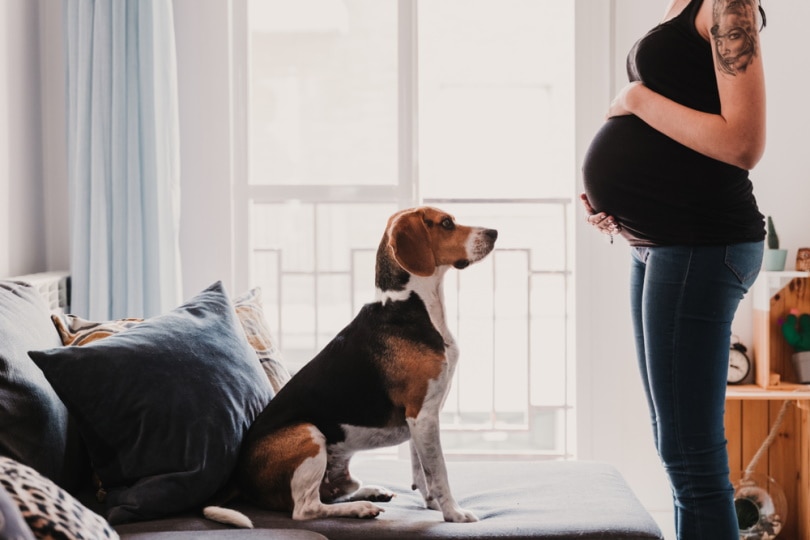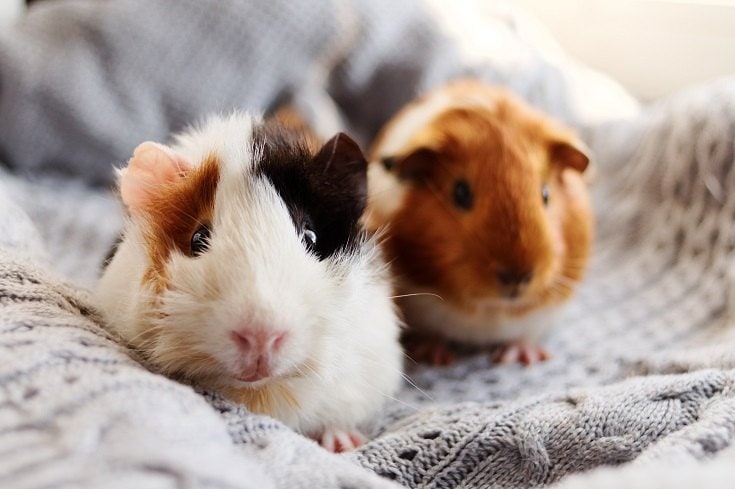
Guinea pigs are among the largest rodents that we keep as pets. But it’s too common to see these critters in cages that are far too small. Often, guinea pig cages are the same size as gerbil or hamster cages. But guinea pigs need far more space to be healthy and happy.
When you’re trying to find the perfect cage for your guinea pig, there are many factors to consider, but the overall size of the enclosure is probably the single most important one. If your cage isn’t big enough, your guinea pig’s health could suffer.
If you’re having a hard time figuring out what size enclosure your guinea pig needs, we’re here to help! This step-by-step guide will lay out exactly what you need to do to ensure that you get a properly sized cage for your rodent.
How Big Are Guinea Pigs?
Compared to other rodents that are commonly kept as pets, guinea pigs are massive. Take a gerbil, for example. These little critters top out at 8 inches long and weigh a mere 2 ounces. Guinea pigs can be twice as long: 16 inches, not including the tail. That’s nothing compared to the weight difference, though! A fully-grown guinea pig can weigh a whopping 2.6 pounds, which is more than 15 times as heavy as an adult gerbil.
Naturally, it makes no sense to stick a big guinea pig in a comparatively tiny gerbil cage. Unfortunately, most of the cages that are sold for guinea pigs are about the same size as little gerbil enclosures.
Space Needs for Guinea Pigs
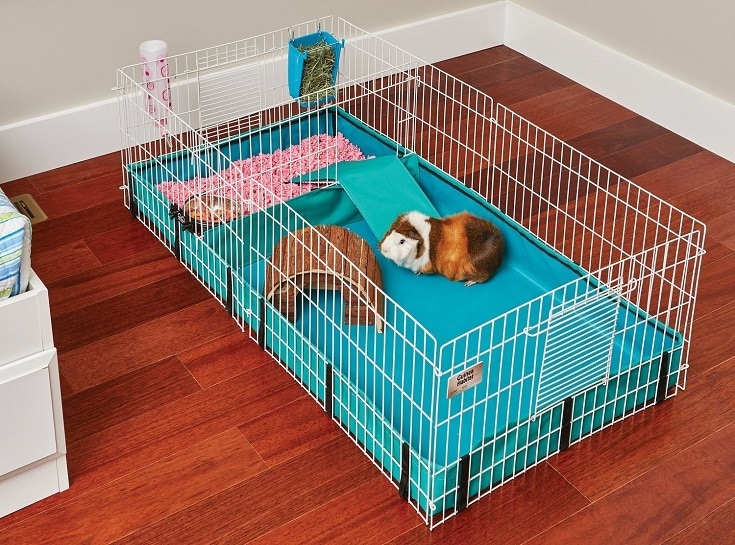
Now that we know exactly how big guinea pigs can get, let’s figure out how much space you need per pig. Remember, these are minimums. More is always better when it comes to providing space for your pet.
A single guinea pig requires a minimum of 7.5 square feet of space to live.
This means you’re looking for a cage that’s about 36 inches long and at least 30 inches wide. You might try the MidWest Guinea Habitat Guinea Pig Home with 8 square feet of space or something else that’s similarly sized.
For two guinea pigs, you’ll need to up the space.
Now, you’re looking for an enclosure offering about 10 square feet of space or more. Look for something that’s close to 4 feet long and at least 30 inches wide. The Ferplast Krolik 160 Guinea Pig Cage is a great example because it provides nearly 10.5 square feet of living space for a guinea pig.
You’re housing three guinea pigs.
You’ll need a cage that provides 13 or more square feet of living space, which equates to a cage that’s 5 feet long and 30 inches wide.
You’ve got four guinea pigs to house.
Keep going up in size. If you stick with the same 30-inch width, you’re looking for a cage that’s about 6 feet long.
Benefits of Providing Ample Space
Providing sufficient space for your guinea pigs can have many positive benefits. A larger living area means more room to exercise, which decreases the likelihood of health concerns like diabetes, bumblefoot, or heart disease. It also means your pets can do their exercise on their own time, so you won’t have to set aside time specifically to exercise them.
You’ll also have an easier time keeping a large space clean. The waste won’t build up as much, and you’ll be able to easily spot clean. Plus, your pigs will separate their bathroom area from the rest of the cage, making it easy to only remove the affected substrate.
Another benefit is that your guinea pigs’ personalities will be more exposed because they will have more room to express their natural behaviors.
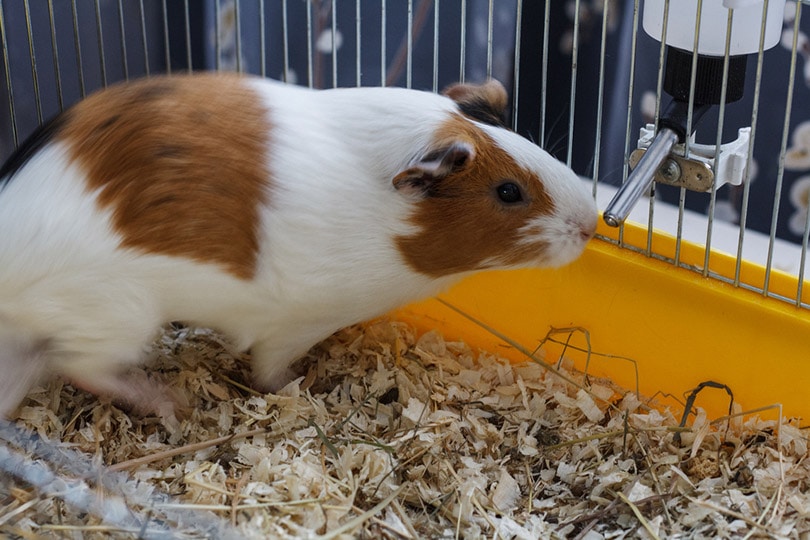
The 5 Steps for Choosing the Right Size Guinea Pig Cage
Now that we’ve covered the basics, let’s take that information and use it to find the perfect-sized cage for your guinea pig. Follow each of these steps, and in the end, you’ll have picked out an ideal enclosure for your pet.
1. Count Your Residents & Calculate
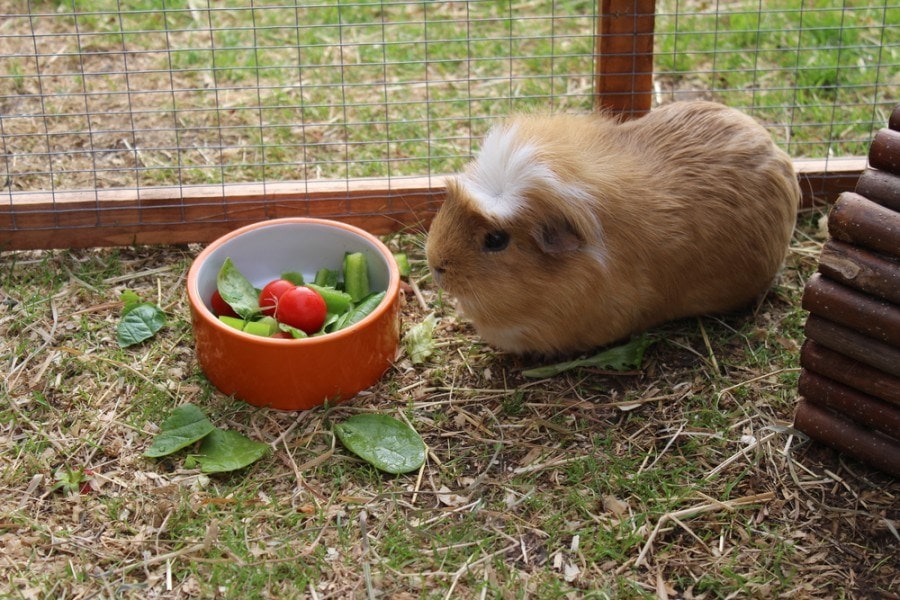
The very first step is to count how many guinea pigs will be sharing an enclosure. A single pig needs 7.5 square feet of space, and since each additional guinea pig requires more space, you need to know exactly how many rodents will be living in this cage. Once you have a headcount, refer to the section that covers space needs to calculate precisely how much space all your guinea pigs will require.
2. Plan for the Future
Once you know the total number of residents that will be inhabiting your new cage, think about the future. Is it possible that you might add more guinea pigs in the future? If so, it’s best to account for them now and purchase a cage that will be large enough to suit them. Remember, you really can’t give your guinea pigs too much space. Even if you never get those additional guinea pigs, the ones you have will be more than thankful for the extra space!
3. Determine a Location
Before you even start looking at cages, you need to pick out a place to put one. You might have space restrictions to deal with. If you skip this step, you might end up with a cage that’s big enough for your guinea pigs, but you have nowhere appropriate to put it!
By figuring out where you’ll put the cage, you can determine what kind of dimensions you’re working with. Let’s say that you have two guinea pigs, and you want to give them a 12-square-foot cage. That cage could be 2 feet wide and 6 feet long, or it could be 3 feet wide and 4 feet long. While both would be adequate for your guinea pigs, they have drastically different footprints. A space that will accommodate one of these cages likely wouldn’t fit the other in its place.
So, you need to first figure out where the cage is going. Measure this area so you know the absolute largest outer dimensions that your cage can be. While doing so, make sure this area has enough all-around space to fit a cage that’s big enough for your guinea pigs, since you already know how much space they’ll need.
4. Start Checking Out Your Options
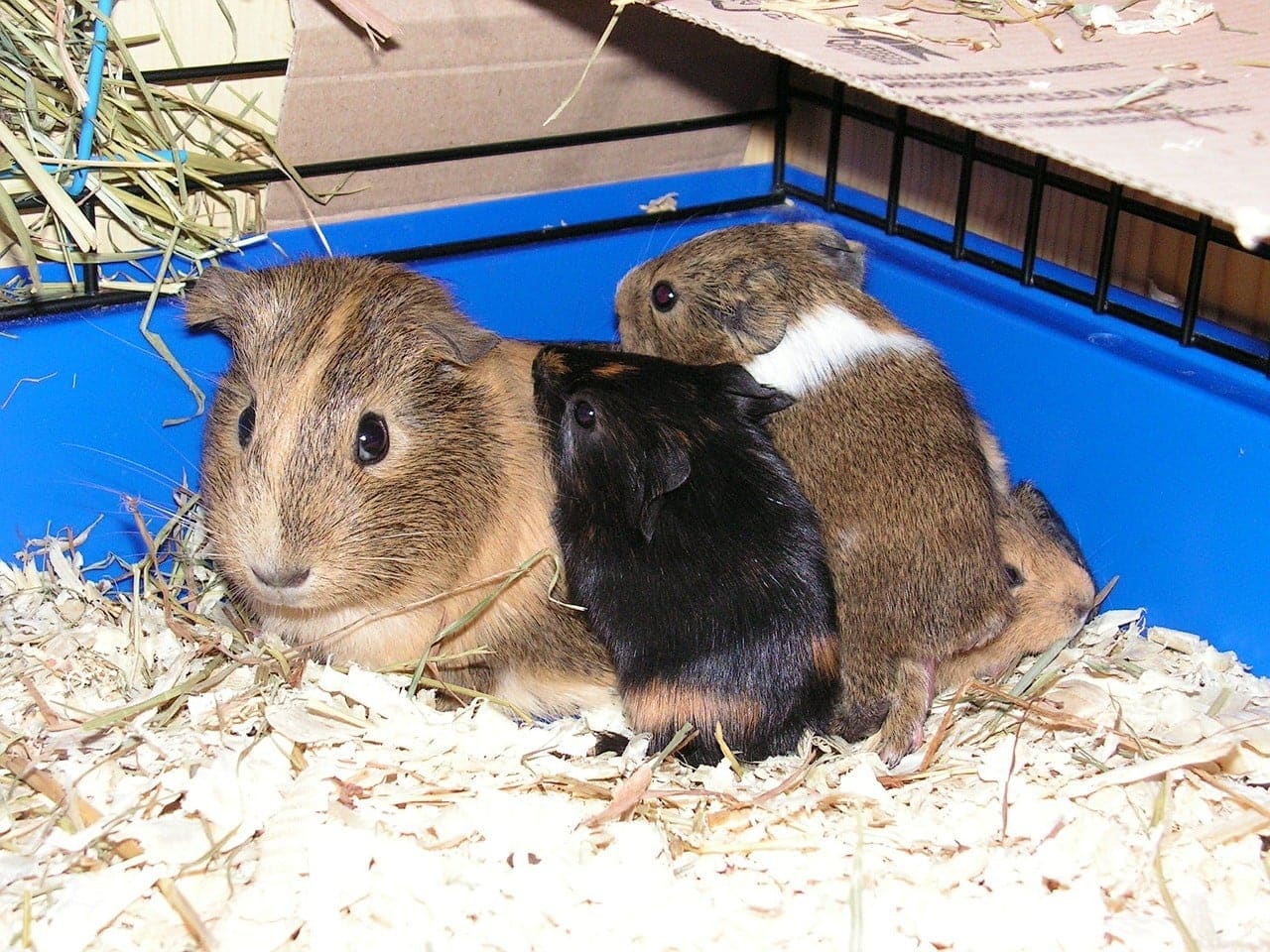
At this point, most of the groundwork is done. Now, it’s time to start seeing what’s available. Check out places like your local pet store, Chewy, or Amazon. You’re likely to find a wide range of different cages in the size that you need. During this step, you should make a list of the cages that are appropriately sized.
5. Pick a Cage!
Now that you’ve got a list of cages that are the right size for your guinea pigs, it’s time to narrow down the choices and pick a single one to purchase. Make sure it fits your guinea pigs and the space that you measured. Then, compare your options, taking into account factors like price, how many rooms they have, what they’re made of, and what other users think of them.
Conclusion
There are plenty of guinea pig cages on the market, but that doesn’t mean they’re all a good fit for your guinea pig! These are big rodents, and they need substantial space to be healthy. Follow the steps outlined in this article, and you should have an easy time picking out a cage that will have ample space for all your guinea pigs.
Featured Image: Mateusz Sienkiewicz, Shutterstock


